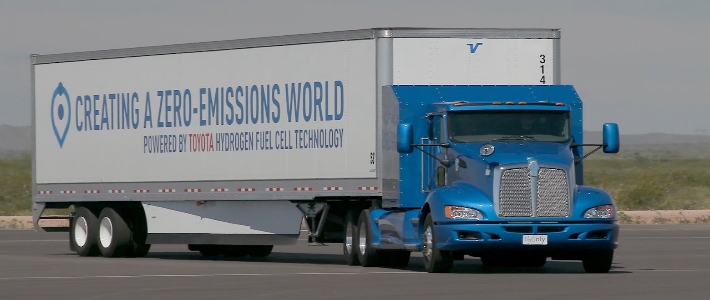Toyota North America Research and Development Department has received the first hydrogen tanks to be used for its heavy-duty fuel cell truck project. The Japanese firm recently unveiled the concept as part of a feasibility study by the Port of Los Angeles, supporting its efforts to reduce harmful emissions.
“Toyota’s project is further confirmation that fuel cell applications continue to expand,” says Rick Rashilla, Vice President of a subsidiary of Hexagon Composites. “Feasibility demonstrations show local and international communities that hydrogen fuel is available and ready to reduce emissions while nurturing energy independence. We look forward to the opportunities this collaboration will bring to our customers.”
Hydrogen is a clean and safe energy carrier that can be used as fuel for power in a wide range of applications, and can be easily stored on a large scale.
With this delivery of the high-pressure hydrogen cylinders, Hexagon Composites is strengthening its position in the hydrogen heavy-duty vehicle market. The group claims it has established a strong position and is working globally on several projects with passenger car OEMs, transit bus, ground storage, gas transportation, back-up power, marine and rail applications.











